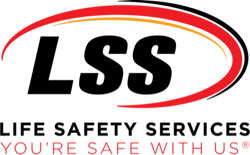The use of fire walls, partitions, and smoke barriers is a great way to compartmentalize a building and protect everyone inside during a fire emergency. Of course, gaps and holes are found from penetrating items such as pipes, conduits and wires. And as you already know, these holes can be sealed through firestopping materials such as sealants, putties, composite sheets, bricks / plugs and spray products to name a few. However, not all firestop products will help prevent the spread of fire. In fact, fireblock foam found in hardware stores is actually flammable and does little to prevent the spread of a fire and smoke.
Firestop products must be tested according to ASTM E814 (UL 1479). Unfortunately, most manufacturers of firestop foam products are test with a modified version of ASTM E814. As a result, these products may not fully protect the building and everyone inside in the event of a fire. In fact, firestop foams are not a true firestop considering the foam burns at a temperature lower than that of average wood. The warning label of one brand even warns that “Cured foam is combustible and may present a fire hazard if exposed to flame or temperatures above 240F.” Not to mention the burning plastic gives off toxic fumes that could be dangerous to inhale. In the event of a fire, the use of these store bought fire safety products will actually just add more fuel to the fire!
This video shows a burn test comparing approved firestop foam and several store bought fireblock foams:
Firestopping products are specifically designed to help prevent the spread of fire and smoke for each type of fire-rated wall, barrier and ceiling. And although it might be easier to use the foam, it may not completely protect you from a fire, like other firestopping materials. So, using the proper firestopping equipment in the proper areas, can help seal off and stop the spread of fire and smoke in the event of an emergency.
To refresh your memory on proper firestop installation, here are a few of the most commonly used firestop materials and where they work best.
- Sealants (silicone, latex, and intumescent) – Used in combustible penetrations, such as plastic piping, multiple cables, and sleeved piping.
- Putties – Hand applied intumescent sealants, which are good for hard-to-reach areas, but typically limited to metal piping and cables.
- Composite Sheets – Used for large openings, and are good for multiple penetrating item systems.
- Firestop Bricks / Plugs – Used as blocks in large and small openings.
- Spray Products – Used to increase protection over sealants in areas such as, the top of a wall and perimeter of fire containment systems.

